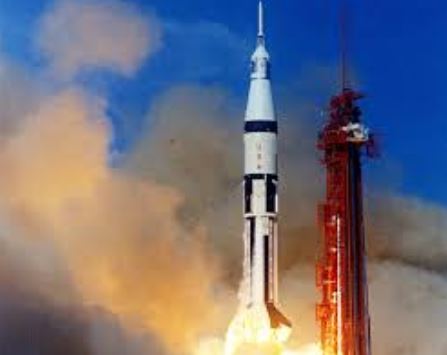Apollo 7, launched on October 11, 1968, was a pivotal mission in NASA’s Apollo Program and marked the first successful crewed flight of the program. This mission was critical in demonstrating the viability of the Command and Service Module (CSM) and set the stage for subsequent Apollo missions, including the historic Apollo 11 Moon landing.
Mission Overview
Apollo 7 was the first mission to carry astronauts into space following the tragic Apollo 1 accident, which had claimed the lives of astronauts Gus Grissom, Ed White, and Roger B. Chaffee. The primary objective of Apollo 7 was to test the redesigned Command and Service Module in Earth orbit, ensuring that it was capable of supporting future lunar missions.
Crew Members
The mission was commanded by Walt Cunningham, with Donn Eisele serving as the Command Module Pilot and Walter M. Schirra Jr. as the Lunar Module Pilot. The crew faced the challenges of testing unflown systems in space and proved crucial for the success of subsequent missions.
Key Objectives and Achievements
Apollo 7 had several key objectives and achievements:
Testing the Command and Service Module
One of the mission’s primary goals was to test the Command and Service Module (CSM) systems in space. This included verifying the performance of the life support systems, navigation systems, and communications equipment. The mission also aimed to ensure that the CSM could operate safely and effectively in Earth orbit.
Performance and Systems Verification
The crew conducted a series of tests and experiments to verify the performance of the CSM’s systems. This included testing the spacecraft’s propulsion, guidance, and navigation systems. The successful completion of these tests demonstrated that the spacecraft was ready for future missions, including those that would land on the Moon.
First Live Television Broadcast from Space
Apollo 7 was also notable for being the first mission to broadcast live television from space. The astronauts conducted live broadcasts that provided the public with an unprecedented view of life in space, including the interior of the spacecraft and the crew’s activities. This helped build public interest and support for the Apollo Program.
Successful Re-entry and Splashdown
After spending 11 days in orbit, Apollo 7 safely re-entered Earth’s atmosphere and splashed down in the Atlantic Ocean on October 22, 1968. The mission’s successful re-entry and recovery demonstrated the spacecraft’s ability to return safely from space, a critical factor for future lunar missions.
Challenges and Issues
Despite its successes, Apollo 7 faced several challenges and issues:
Spacecraft Performance Issues
The mission encountered issues with the Command and Service Module systems, including problems with the television camera and the spacecraft’s cooling system. The crew had to adapt to these challenges and find solutions while in orbit.
Crew Health and Comfort
The crew experienced discomfort due to the cramped conditions inside the Command Module, leading to some disputes and stress among the astronauts. The issues highlighted the need for improvements in spacecraft design and crew comfort for future missions.
Impact of the Apollo 1 Accident
The Apollo 7 mission was conducted under the shadow of the Apollo 1 tragedy, which had caused significant delays and required redesigns of the spacecraft. The successful completion of Apollo 7 was a critical step in regaining confidence in the program and paving the way for future missions.
Legacy and Impact
Apollo 7 played a crucial role in the success of the Apollo Program and space exploration:
Validation of Spacecraft Design
The successful completion of Apollo 7 validated the redesigned Command and Service Module and demonstrated that it was ready for more ambitious missions. This laid the foundation for subsequent missions, including the historic Apollo 11 Moon landing.
Public Engagement and Support
The mission’s live television broadcasts helped engage the public and build support for the Apollo Program. The images and footage from the mission provided a glimpse into space travel and contributed to the program’s widespread popularity.
Influence on Future Missions
Apollo 7’s success paved the way for future Apollo missions, including those that would land on the Moon. The mission’s achievements and lessons learned were integral to the continued development and success of the Apollo Program.
Apollo 7 was a groundbreaking mission that marked the first successful crewed flight of NASA’s Apollo Program. The mission’s successful testing of the Command and Service Module, along with its live television broadcasts, set the stage for future Apollo missions and played a crucial role in the history of space exploration. The achievements and lessons learned from Apollo 7 remain a testament to the perseverance and ingenuity of the astronauts and engineers involved in the program.



